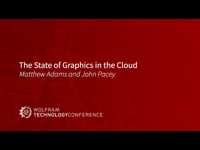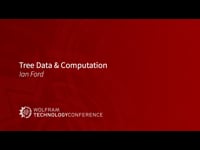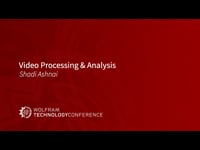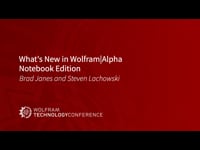120 videos match your search.
 |
Matthew Adams and John Pacey This talk details our efforts to bring the full power of Wolfram Language graphics to the Wolfram Cloud. We break down our next-generation graphics rendering system and give a sneak ... |
 |
Tom Wickham-Jones This talk describes the Wolfram Compiler and how it integrates with the Wolfram Language, covering the Data Structure library, a growing collection of common data structures. It also includes the ... |
 |
Ian Ford Trees are fundamental data structures in mathematics and science, with standard examples including XML trees, file systems and Wolfram Language expressions. We present symbolic Tree objects, added in Version 12.3 of ... |
 |
Jason Harris Many everyday notations and structures in Mathematica now use TemplateBoxes in the front end, making it an important building block for developers. This presentation discusses multiple topics around this somewhat ... |
 |
Ming Hsu This presentation discusses validity challenges to AI algorithms and demonstrates the ways linguistical and social biases still pervade AI training. |
 |
Kurt Boge The publishing house Forlaget Matematik began a project in Danish high schools with the primary goals of adapting Mathematica to the existing national curriculum and examining the pedagogical potential of ... |
 |
Nik Fadzly N Rosely This talk discusses an experiment to test whether machine learning via Wolfram Language can be "fooled" by images of natural flora in the same way that living species can be. |
 |
Tom Sherlock By using facilities built into Mathematica for calling into other languages like Python, one can leverage existing libraries and algorithms for performing specialized image processing workflows. |
 |
Tim McDevitt We will tour new vector plotting functions, including Stream Plot 3D,Vector Displacement Plot and Vector Displacement Plot 3D. |
 |
Carlo Giacometti |
 |
Shadi Ashnai |
 |
Brett Champion |
 |
Devendra Kapadia Recent and upcoming features related to calculus and algebra in the Wolfram Language include support for interval computation in more than one hundred mathematical functions, powerful new techniques for evaluating ... |
 |
Charles Pooh |
 |
Jan Poeschko After a general introduction to the Wolfram Cloud, we'll talk about what's new in the world of cloud notebooks and beyond. Some of the highlights are TeX input, video support and rendering of external notebooks from a URL or notebook expression. New core functionality includes system modeling ... |
 |
Jason Biggs This talk will showcase new functionality for working with the Molecule, a symbolic representation of a chemical species introduced in Version 12 of the Wolfram Language. Topics will include seamless integration ... |
 |
Brad Janes and Steven Lachowski As Wolfram|Alpha Notebook edition turns two, we're showing off all of the educational and fun new features that we have added over the last year. In addition to many ... |
 |
Kevin Hao, Alan Joyce, Ish Vardhani, Jason Sonnenberg, Keri Moran, Elisabetta Caldesi and Sharon Grimshaw Microsoft and Wolfram partnered to integrate Wolfram knowledge in Excel, using the same technology within in Wolfram|Alpha and the Wolfram Language. Data literacy sets students up for future success. ... |
 |
Gaurav Vishal This talk discusses how Wolfram Language can be used for modeling and analysis in materials science including the following function topics: Molecule; LatticeData and related functions; ImageProcessing to analyze microstructures; ... |
 |
Stephen Wolfram |